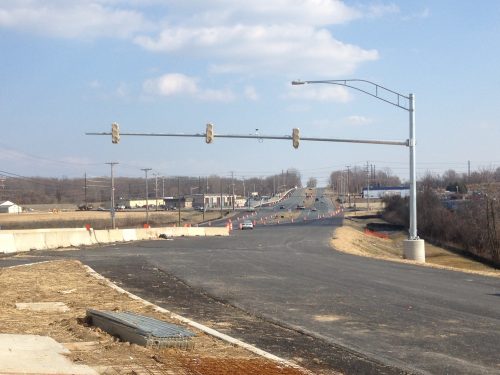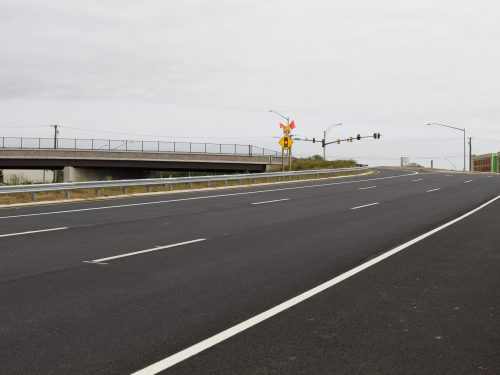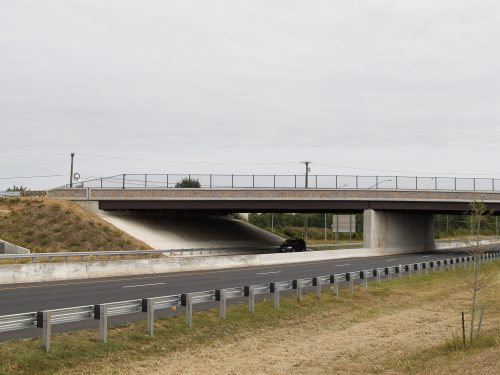US 40 at MD 715 Interchange
US 40 at MD 715 Interchange
Thousands of additional personnel and their families were relocated to Aberdeen Proving Ground (APG) as part of the US Department of Defense’s Base Realignment & Closure (BRAC) initiative. State and local officials recognized that improvements to local infrastructure, such as roads and bridges, would be needed to support increases in traffic volumes. As a significant part of the solution, JMT and American Infrastructure, our design-build partner, collaborated on a fast-tracked, phased basis to complete enhancements that added capacity to US 40, MD 715, and its interchange.
The primary work under Phase 1 included widening MD 715 in both directions between south of Amtrak Bridge to the APG entrance. Phase 2 work involved upgrading the US 40/MD 715 interchange, including widening the bridge on MD 715 over US 40.
JMT designed improvements to US 40 and MD 715, connecting ramps and adjoining roadways, for a total project length of approximately 2.4 miles. Other services included relocation designs for 800 LF of a stream, drainage design, stormwater management, erosion and sediment control, traffic and lighting, landscaping, utility relocation design and coordination, and obtaining permits for construction from the Maryland Department of the Environment. JMT also designed an in-kind replacement of the entrance sign and gate facility leading to APG.
JMT’s Survey/SUE team performed various survey and subsurface utility engineering services, such as maintenance of traffic (MOT), including lane closures; utility permits; lane closure permits, and subsurface utility coordination. Staff provided utility coordination with BGE, Verizon, Verizon Business, Comcast, Harford County, and the City of Aberdeen Water and Sewer to address the numerous relocations required to accommodate the projects construction.
Our team developed, supervised, and inspected falling weight deflectometer testing of the pavements, pavement condition surveys, patching surveys, geotechnical explorations, analyzed the field and laboratory test data, performed pavement design, and provided recommendations for new pavements construction, widening of existing pavements, and rehabilitation of the existing pavements. MOT was also provided for performance of the geotechnical exploration program.














